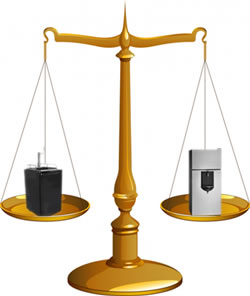Keeping your home draft system flowing smoothly and efficiently is primarily a matter of practicing weekly maintenance. Being well informed of new developments in home draft technology is helpful as well. But gadgets can only help so much. Attention to detail and regular cleaning is what will keep your system running well in the long term. Keeping a good balance between your carbonation level and pressure can help your beer flow its best. The length of your beer lines can affect the carbonation level of your beer as well. In this day and age, you can have an even smoother draft by adding a nitrogen draft system or nitrogen-CO2 mixture to your home draft system.
 |
Gas manifolds are the simple way to mix nitrogen and CO2 to smooth out your brews. These units are fairly inexpensive and allow you some flexibility in your brew's bubble of choice. The impetus behind using nitrogen mixtures is an attempt to imitate the method of carbonation used for Guinness. The gas used to pressurize Guinness is 70% nitrogen and 30% CO2. This is based on the ratio in the natural atmosphere of the Earth, except without Oxygen.
The trouble with mixing these gasses is that the CO2 will infuse before the Nitrogen will. This is why it is necessary to infuse beer with nitrogen overnight before adding any CO2. The Nitrogen also needs a higher pressure to infuse into the beer. Gadgets such as a sintered stone help to diffuse the N2 into the beer-gas mixture, but you must also give the mixture time to infuse.
Your use of nitrogen mixtures to carbonate your ale should be used judiciously. The nitrogenation process works (and tastes) better in stouts, porters, and ambers. These ales have an emphasis on their malt character, which tends to be enhanced with the nitrogenation process. Some beer experts have noted that nitrogenation tends to wash out the bitter tastes of beer to some degree, so if you want to maintain the hop character or bitter grain texture of your beer, you should stick with CO2 carbonation.
If you are having trouble with the carbonation level of the beer pouring forth from your kegerator, you may want to explore the length of your beer lines - and either shorten or lengthen them. One problem with unnecessarily long beer lines is that the beer can warm up as it travels down the line. If your beer is flowing through any un-cooled area, including the tap, it may be warming up in the line. As the beer warms even slightly, it causes CO2 to be released from the mixture, causing an over-foaming brew to emerge from the spigot.
If your entire beer line is refrigerated, then there may be a problem with having too short of a beer line. Adding twelve inches can help in some cases, especially for home draft systems. This is because the natural state of carbonation in the beer is higher than the level of pressure with which it can be served without foaming. The extra tubing allows for some "flex", where the beer can regulate its pressure somewhat as the line flexes. It is worthwhile to investigate the length of your beer lines if you are having trouble with over-foaming.
Keeping your home draft system in top shape through regular maintenance is the surest bet to keep your beer flowing evenly. A good balance to the carbonation and nitrogenation involved in each individual beer will help each individual beer to taste its best. Don't forget to stay informed of new innovations in home draft technology, either. All of this will help keep your home draft system balanced and flowing smoothly.
Komos
 Summit
Summit
 Beverage-Air
Beverage-Air
 DCS
DCS
 Marvel
Marvel
 Perlick
Perlick
 Bull
Bull
 Avanti
Avanti
 Danby
Danby
 CM Becker
CM Becker
 Continental
Continental
 Fagor
Fagor
 Cal Flame
Cal Flame
 Twin Eagles
Twin Eagles
 Fire Magic
Fire Magic
 GrowlerWerks
GrowlerWerks
 Hestan
Hestan
 Igloo
Igloo
 True
True
 Intertap
Intertap
 Kegco
Kegco
 Keggermeister
Keggermeister
 Koolatron
Koolatron
 KegLand
KegLand
 Krowne
Krowne
 Krups
Krups
 Lynx
Lynx
 Maxx Cold
Maxx Cold
 Micro Matic
Micro Matic
 Midea
Midea
 Nor-Lake
Nor-Lake
 Nostalgia
Nostalgia
 Arctic King
Arctic King
 Synek
Synek
 Taprite
Taprite
 Turbo Air
Turbo Air
 UBC Group
UBC Group
 Value Series
Value Series
 Versonel
Versonel
 VinoTemp
VinoTemp
 New Leaf
New Leaf





